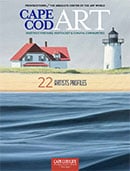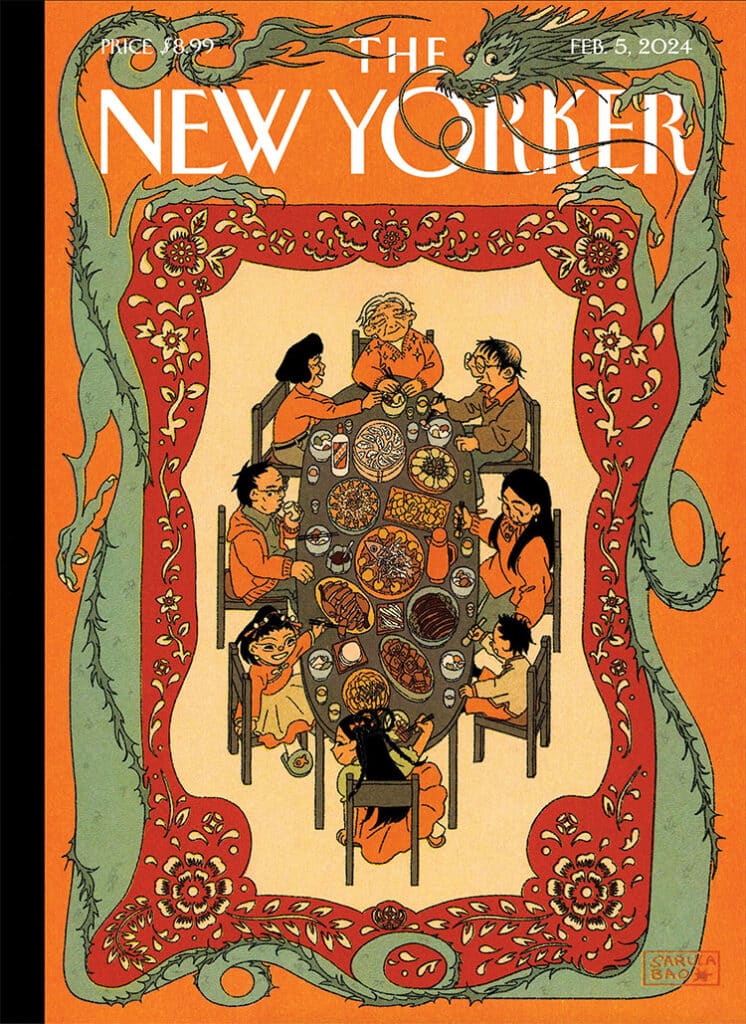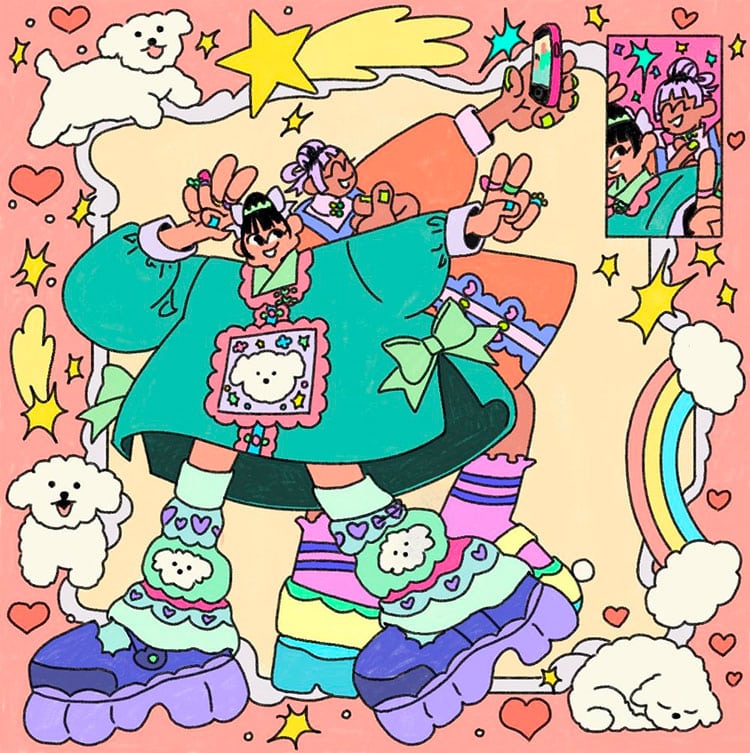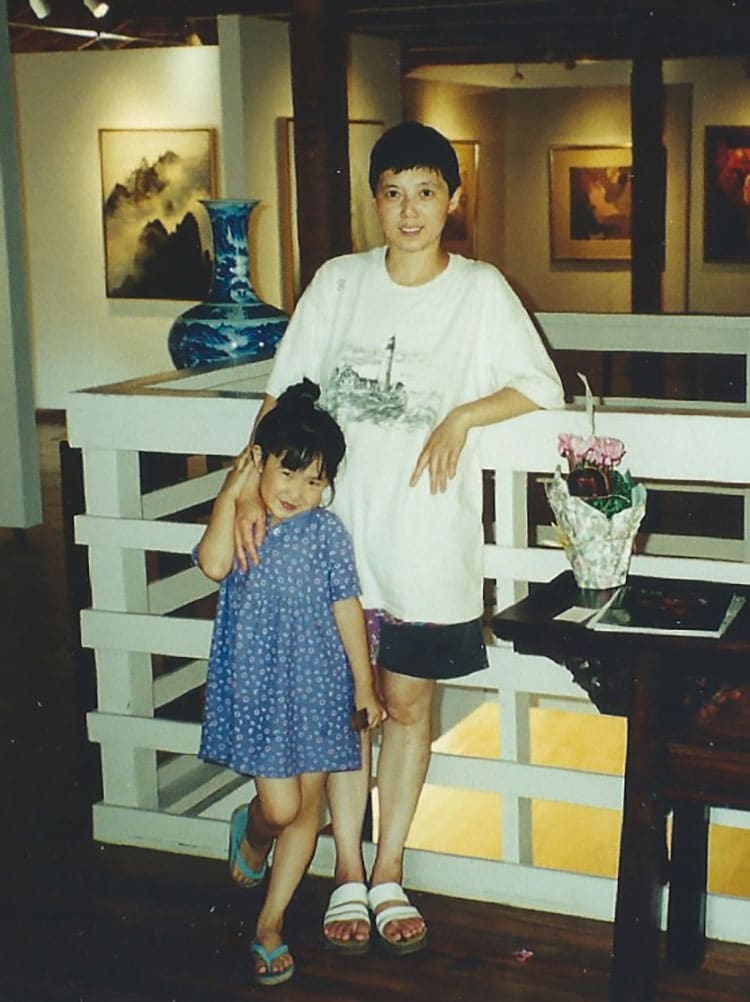
Artist Watch: Sarula Bao
Cape Cod Art / ART Annual 2025 / Art & Entertainment
Writer: Christina Galt
Artist Watch: Sarula Bao

Cape Cod Art / ART Annual 2025 / Art & Entertainment
Writer: Christina Galt
In 1999, Tao Water Art Gallery opened its doors bringing Asian contemporary art to West Barnstable. Inside the doors of that gallery was five-year-old Sarula Bao, the daughter of owners Dian and Lede Bao, who found herself immersed in a world of creative exploration—however at that young age none of it phased Bao. She laughs, “I just loved cartoons, drawing and making little books. I didn’t really think much of it.” In addition to her parents owning a gallery, her father Lede is an accomplished figure and abstract landscape painter in his own right. “To me, growing up it was just normal, it was his job,” remembers Bao. “I would even travel with my parents to studio visits with artists.” All these factors contributed to her subliminal understanding that art was a viable profession.


“I believe it had a profound impact on me to grow up surrounded by art and be in an artistic environment—in particular one that is supportive of the arts,” says Bao. Society’s notion of the “starving artist,” was never an anxiety that seeped into her brain. “I think for a lot of kids, having parents that are super supportive of you going into the arts is rare. I never thought ‘I can’t do this,’ and I am lucky that my parents encouraged me to pursue art school, develop an art practice, and to have grown up with that kind of confidence instilled in me. My parents created a household where I could have dreams, goals, aspirations, and I was never discouraged that they weren’t fully attainable.”
And while this confidence seemed unshakable in high school, Bao confesses that during her time at Rhode Island School of Design (RISD) she began to have doubts about her path. “It was a highly stressful and pressured environment to be in,” expresses Bao. But at the same time, art school allowed her to try her hand in a range of interests—from fine art to fashion design—until she firmly landed on illustration. “Drawing is something that came the most naturally to me. It was something that, through the years, always remained my primary interest. I grew up loving narratives and storytelling,” she explains as she laughs, “I was a pretty big nerd, whether they were Westerns or Japanese comics/zines, I was always into it.” After graduating in 2016 with a BFA in Illustration from RISD, Bao began her pursuit of a career in illustration and comics/zines.
Today, Bao teaches at the School of Visual Arts RisoLAB in New York City where she gives lessons on the Risograph printer (which is what most of her practice takes place on) as faculty and the lead technician. Bao explains, “It’s a printer that was invented in the 60s and later mass produced in the 80s. Essentially it became an alternative to the copy machine, however it uses similar ideas around printing as a mimeograph.” She continues, “It is a process in which each color is applied separately, creating a copy as an impression on paper. It’s this thin film that has holes in it and ink is repeatedly pushed through those holes to create a copy. The Risograph burns the image into the film screen, spins rapidly, and pushes the ink out to create an impression.” Bao notes that this printing method is more efficient and eco-friendly. With a wider color spectrum to play with compared to a regular printer, and what she describes as a more “painterly quality,” (due to the oil-based ink) Bao says, “It’s a fun machine for artists to use because it is essentially a color mixing tool. Each color is applied separately, so there is more space for the finished work to be imperfect due to misalignments and happy natural accidents.” Plus, when she’s not teaching, Bao runs her own small press/Risograph studio, Endless Editions, in the city where she publishes the work of many artists in addition to her own.
When it come to the inspiration behind her work, she says, “Some big inspirations for me are Chinese art, aesthetics, narratives and storytelling. That spans from so many different corners of art and history—including Chinese folk art, Chinese New Year poster art from the 60s and 70s, which includes the Chinese Republican era advertisements—there is just so much art, fashion, architecture, and patterns that have existed throughout the thousands of years that China has been around.” Bao continues, “There is a lot that I’m looking at, and that’s big for me because it’s my tie to my lineage, my culture, my history, and my memory. Everything is connected and I have developed a genuine love for all these different art forms. Especially with the diaspora, there is an automatic disconnect that feeds my desire to research and investigate what kind of art Chinese people have made throughout history.” And on the other hand, Bao says, she finds influence from what Chinese illustrators, fashion designers, artists, and graphic designers are making today. “Fashion is big for me. I look at a lot of runway shows, collections from new designers both in the West and the East.”
Drawing from her own life experiences, her imagination, and her heritage, Bao’s stories come to life through text and illustrations. “My work is always based in something personal, whether it’s a character, story, or something that I’m seeking to explore,” she shares. In her autobiographical comic, To All the White Girls I’ve Loved Before, she explores the intersecting themes of class, race, and culture—drawing from her time growing up on the Cape and attending Cape Cod Academy. “My comics can also be a story about somebody else, but at the same time it is also me,” Bao reflects. “I’m really interested in narrative itself, which can look like a lot of things. It is also the stories that you tell yourself, the stories you romanticize. It can be as big as a structure such as white supremacy, a romantic idea of what you think your life should look like, or what you are taught that should look like. I’m interested in exploring those themes and themes of queerness—those are all recurring in my work.”

When asked what she hopes readers take away from her narratives, she shares, “…that readers respond to it, see themselves in it and if they don’t, I believe they will learn something. Maybe they find some insight into how I think. It’s nice if people can see me in my work, and what I’m trying to express, but I also think it’s okay if people resonate with it for their own reasons. That’s what is compelling about art in general, it is always going to be whatever the viewer ultimately makes of it, and I find that relationship fascinating.”
While her career as an illustrator has yielded some big accomplishments—for example gracing the cover of The New Yorker (twice!)—Bao smiles, “I think my younger self would think I’m pretty cool,” as she emphasizes, “not only for my artistic achievements, but for the community I’ve built. As a kid, my dreams were so different, but as I got older, I realized that there is so much more to life than just being an artist. You can be a great friend or community member—there are so many other things that we, as people, have to offer the world, not just our artwork as labor. I think a lot of young artists put all their self-worth on their work, when really, that ends up hurting you in the long run. We’re people that should develop ourselves as people in a multitude of ways. Balance has become huge for me, so I think she would be happy to know that I can still find the joys in just drawing for myself.”
To see more from Sarula Bao visit her website sarula-bao.com. Follow her on Instagram, @bao___haus, to keep up with her upcoming projects. Learn more about Endless Editions by following them on Instagram @endlesseditions. Visit Tao Water Art Gallery at 1989 Main Street, West Barnstable.
